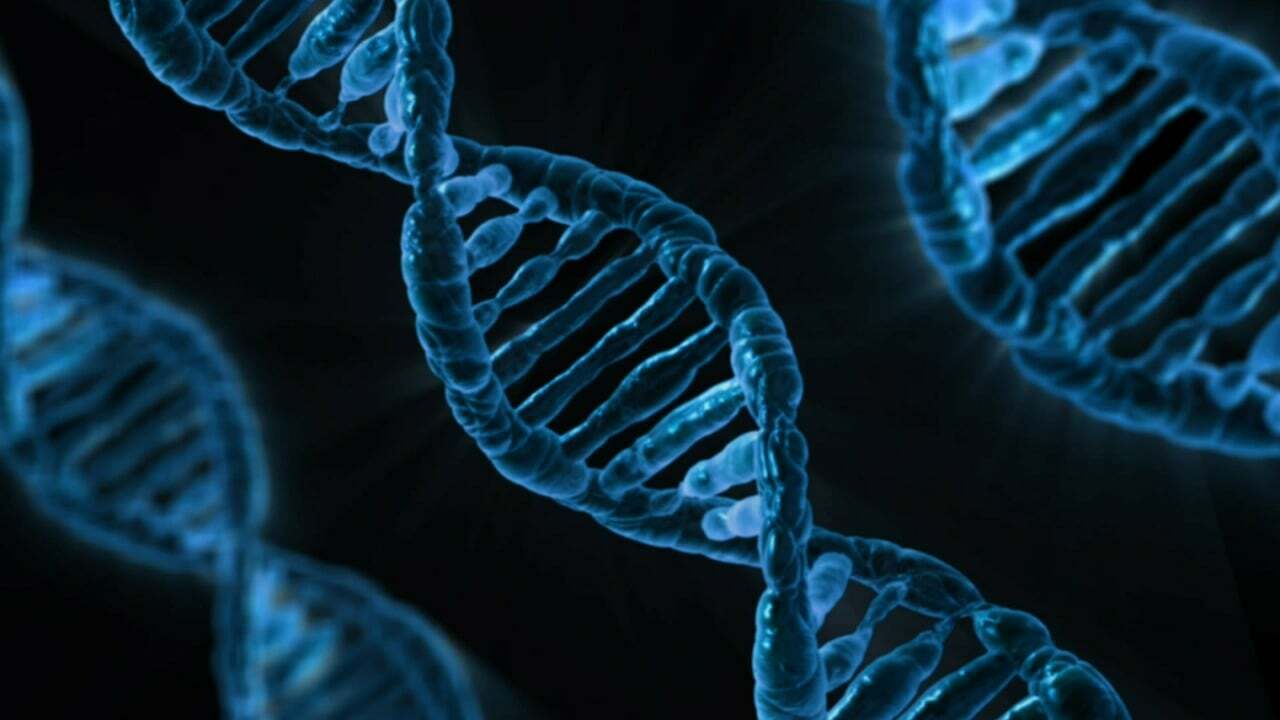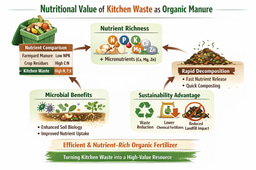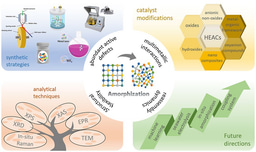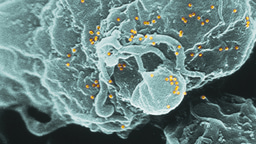Bridging the Gap: Addressing the Rare Disease Research Divide
Published in Healthcare & Nursing, Social Sciences, and Biomedical Research

On 28th July 2017 at Great Ormond Street Hospital in London, the life support systems keeping 11-month-old Charlie Gard alive were disconnected (1). Charlie had a rare genetic condition called Infantile Onset Mitochondrial DNA Depletion Syndrome (MDDS), which is thought to have a prevalence of less than 1 in a million (2). Prior to Charlie Gard’s birth, only 15 cases of his rare genetic variant of MDDS had been reported in the world. Tragically, all of these children experienced early-onset muscle weakness and death within a few months of birth (3). Charlie’s parents had fought tirelessly for the last few months of his life to gain permission to take him to the United States and receive an experimental treatment developed by neurologist Michio Hirano, which had not yet been tested in Charlie’s rare variant of the disease. By the time Hirano came to the UK to examine Charlie, it was decided that Charlie’s brain damage was too advanced for him to benefit from any treatment (4). Since Charlie Gard’s case permeated the media in 2017, many questions have persisted. Why are treatments for rare disease patients so scarce, especially for young people?
The issue lies partly in the practicalities and costs involved in conducting research on such small populations. By definition, rare diseases affect fewer than 1 in 2000 people (5). Such small sample sizes in research can lead to random variation and a lack of statistical significance of the results (6). Despite recent initiatives to improve statistical methodology for small population samples, such as the Innovative Methodology for Small Populations Research (InSPiRe) project, practical issues of recruitment remain (7). Although many rare disease patients are eager to participate in research and help improve general understanding of their condition, others may feel reluctant to participate, essentially feeling like a ‘fascinoma’: a rare object of fascination for healthcare professionals and scientists (8, 9). Some patients might be unable to travel over long distances to take part in research studies due to mobility limitations as a result of their condition or the large geographical distribution of patient populations (10). Multi-centre studies across different regions or countries may also need to be established, significantly driving up costs (11). Advancements in telemedicine, a field that has grown rapidly since the Coronavirus pandemic, have provided a potential solution to this problem, albeit with limitations. Telemedicine can expose research participants’ data to potential breaches, and it does not allow for comprehensive history-taking and examinations. It can also exclude certain populations who are not accustomed to using such technology, such as the very young or elderly (12).
A high proportion of individuals currently living with a rare condition are children or young people, given that up to 75% of rare diseases are thought to start in childhood (13). Growing up with a rare disease can have a significant psychosocial impact on an individual, leading to low self-esteem and feelings of being different or disadvantaged compared to peers (14). This is why conducting clinical research in young populations is a fundamental priority. However, there are practical and ethical challenges associated with this. Whilst an adult can legally consent to participating in clinical research studies, a child cannot, and consent must be obtained from one or both parents, or a suitable guardian. Considering the already low population sizes of rare conditions, this leads to considerably less research participation when compared with adult trials (15). Additionally, drug action and pharmacokinetics is different in children compared with adults, so trialling potential pharmaceutical targets in children with rare conditions, a population for whom research is already lacking, could be viewed as a potentially disastrous gamble with the unknown (16).
Case Study
To gain a deeper understanding of the risks and benefits that research can have for young people and their families, I had the pleasure of speaking to Mrs P, who is a carer for her son. He is now an adult but has lived with Pitt-Hopkins Syndrome, a rare neurological condition caused by alterations to or a deletion of the TCF4 gene, since birth. It is characterised by developmental delays, specific facial features and breathing abnormalities, such as breath-holding and episodic hyperventilation (17). Mrs P advocates tirelessly for the condition and she is active within a support group for carers of individuals with Pitt-Hopkins Syndrome, the first and currently the only support group in the world specific to the condition. She is acutely aware of the benefits that research can offer for young people with rare conditions, as her son was one of the first to be diagnosed using the first genetic test developed for PTHS.
As is the case for many rare conditions for which research evidence is lacking, official NICE (National Institute for Health and Care Excellence) guidelines specific to Pitt-Hopkins Syndrome do not currently exist. Instead, an international consensus statement published in 2019 summarises the available literature on the condition’s diagnosis, as well as management of aspects such as breathing, physical and behavioural issues (18). A consensus statement is produced by an independent panel of experts, whilst clinical practice guidelines are based on a systematic review and meta-analysis of robust evidence, providing algorithms for healthcare practitioners to follow (19). Research into rare conditions such as PTHS and their effects on people of all ages could allow for clearer, more evidence-based recommendations in the form of clinical practice guidelines.
Research could also offer benefits not only for the rare disease populations being studied, but for more common conditions as well. For example, research into Tuberous Sclerosis Complex (TSC), a rare disease causing non-cancerous tumours to develop, led to a better understanding of cell growth pathways involved in cancer development. As a consequence, drugs which were previously being used to target these pathways in TSC, such as rapamycin, were also being considered for use in cancer treatments (20, 21).
Due to the rarity of Pitt-Hopkins Syndrome, which has an estimated prevalence between 1 in 225,000 and 1 in 300,000 births, obtaining funding for research is challenging (22). Pharmaceutical companies often prioritise conditions with larger patient populations because they offer a higher return on investment. This can leave rare diseases reliant on government grants and private funding, which charities and support groups such as Mrs P’s are often tasked with securing (23). To overcome this, Pitt-Hopkins Syndrome is often referred to in the literature as a form of Autism, a more common condition with a prevalence of around 1 in 100 (24). Mrs P explained to me that this helps to secure grants, even though the two conditions are distinct. Whilst Pitt-Hopkins Syndrome can indeed co-occur with Autism Spectrum Disorder, conflating the two conditions can perpetuate misconceptions (25). This can lead to inappropriate research into interventions that do not address the specific needs of individuals with PTHS. Therefore, further investigation into their distinction and PTHS-specific interventions is warranted (26).
Mrs P is aware that her son was exceptionally fortunate to receive a diagnosis. There are likely many people yet to be diagnosed, as the first causative gene was only discovered in 2007, and in her experience, awareness of the condition amongst healthcare professionals is generally low (27). However, she is also aware of the potential harms that clinical research can have on those with rare conditions. Unlike Charlie Gard’s fatal condition, for which a cure is desirable, Pitt-Hopkins Syndrome is not known to affect life expectancy (28). Mrs P is conscious of the fact that many people are wary of scientists who peddle the idea of a ‘cure’. Although she agrees that there is a place for research into the management of potentially life-impacting aspects of PTHS, such as breathing abnormalities, she is cautious of research that seeks to ‘improve brain connections’. For example, a 2022 study presented novel data suggesting that inhibiting the voltage-gates sodium channel Nav18 in mouse models of PTHS could ‘normalise neuronal function, brain circuit activity and behavioural abnormalities’ (29). Some families fear that research into such neurological treatments could not only raise false hopes but may also impact the individuality of patients, effectively changing their identity and view of themselves. For many families, acceptance and unconditional support is the best way forward.
Summary
Cases such as that of Charlie Gard as well as the lived experiences of individuals such as Mrs. P and her son highlight the critical need for increased research, awareness and funding for rare conditions. Conducting clinical research in children and young people within the rare community presents unique challenges underpinned by ethical considerations and small population sizes. However, the potential advantages are wide-reaching, not only benefitting those with rare conditions and their families, but also contributing to healthcare more broadly by facilitating our understanding of the basic mechanisms behind disease.
References
- Wilkinson D, Savulescu J. Wellcome Trust–Funded Monographs and Book Chapters. Ethics, conflict and medical treatment for children: From disagreement to dissensus. London (UK): Elsevier
- Mayor S. Charlie Gard dies in hospice after High Court rules against prolonging life support. BMJ. 2017;358:j3673.
- El-Hattab AW, Scaglia F. Mitochondrial DNA depletion syndromes: review and updates of genetic basis, manifestations, and therapeutic options. Neurotherapeutics. 2013;10(2):186-98.
- Wilkinson D, Savulescu J. Hard lessons: learning from the Charlie Gard case. Journal of Medical Ethics. 2017;44:medethics-2017.
- The Lancet Global H. The landscape for rare diseases in 2024. The Lancet Global Health. 2024;12(3):e341.
- Cao Y, Chen RC, Katz AJ. Why is a small sample size not enough? The Oncologist. 2024;29(9):761-3.
- Friede T, Posch M, Zohar S, Alberti C, Benda N, Comets E, et al. Recent advances in methodology for clinical trials in small populations: the InSPiRe project. Orphanet J Rare Dis. 2018;13(1):186.
- Griggs RC, Batshaw M, Dunkle M, Gopal-Srivastava R, Kaye E, Krischer J, et al. Clinical research for rare disease: Opportunities, challenges, and solutions. Molecular Genetics and Metabolism. 2009;96(1):20-6.
- Moore J, Goodson N, Wicks P, Reites J. What role can decentralized trial designs play to improve rare disease studies? Orphanet J Rare Dis. 2022;17(1):240.
- DeWard SJ, Wilson A, Bausell H, Volz AS, Mooney K. Practical aspects of recruitment and retention in clinical trials of rare genetic diseases: the phenylketonuria (PKU) experience. J Genet Couns. 2014;23(1):20-8.
- Hilgers R-D, König F, Molenberghs G, Senn S. Design and analysis of clinical trials for small rare disease populations. Journal of Rare Diseases Research & Treatment. 2016;1.
- Gajarawala SN, Pelkowski JN. Telehealth Benefits and Barriers. J Nurse Pract. 2021;17(2):218-21.
- Bavisetty S, Grody WW, Yazdani S. Emergence of pediatric rare diseases: Review of present policies and opportunities for improvement. Rare Dis. 2013;1:e23579.
- Belzer LT, Wright SM, Goodwin EJ, Singh MN, Carter BS. Psychosocial Considerations for the Child with Rare Disease: A Review with Recommendations and Calls to Action. Children (Basel). 2022;9(7).
- Kern SE. Challenges in conducting clinical trials in children: approaches for improving performance. Expert Rev Clin Pharmacol. 2009;2(6):609-17.
- Kearns GL, Abdel-Rahman SM, Alander SW, Blowey DL, Leeder JS, Kauffman RE. Developmental pharmacology--drug disposition, action, and therapy in infants and children. N Engl J Med. 2003;349(12):1157-67.
- Sweetser DA, Elsharkawi I, Yonker L, Steeves M, Parkin K, Thibert R. Pitt-Hopkins Syndrome. In: Adam MP, Feldman J, Mirzaa GM, Pagon RA, Wallace SE, Amemiya A, editors. GeneReviews(®). Seattle (WA): University of Washington, Seattle
- Zollino M, Zweier C, Van Balkom ID, Sweetser DA, Alaimo J, Bijlsma EK, et al. Diagnosis and management in Pitt-Hopkins syndrome: First international consensus statement. Clin Genet. 2019;95(4):462-78.
- Roukis TS. College Commences Clinical Consensus Statement Development. The Journal of Foot and Ankle Surgery. 2015;54(2):151.
- Luo C, Ye W-R, Shi W, Yin P, Chen C, He Y-B, et al. Perfect match: mTOR inhibitors and tuberous sclerosis complex. Orphanet Journal of Rare Diseases. 2022;17(1):106.
- Faivre S, Kroemer G, Raymond E. Current development of mTOR inhibitors as anticancer agents. Nature Reviews Drug Discovery. 2006;5(8):671-88.
- Zollino M, Zweier C, Van Balkom ID, Sweetser DA, Alaimo J, Bijlsma EK, et al. Diagnosis and management in Pitt-Hopkins syndrome: First international consensus statement. Clinical Genetics. 2019;95(4):462-78.
- Monaco L, Letinturier MCV, Aketa N, Athanassiou D, el Hajjar J, Frost S, et al. The complexity of funding rare disease research: an IRDiRC assessment of the landscape. Rare Disease and Orphan Drugs Journal. 2024;3(4):27.
- Zeidan J, Fombonne E, Scorah J, Ibrahim A, Durkin MS, Saxena S, et al. Global prevalence of autism: A systematic review update. Autism Res. 2022;15(5):778-90.
- Richards C, Jones C, Groves L, Moss J, Oliver C. Prevalence of autism spectrum disorder phenomenology in genetic disorders: a systematic review and meta-analysis. Lancet Psychiatry. 2015;2(10):909-16.
- Watkins A, Bissell S, Moss J, Oliver C, Clayton-Smith J, Haye L, et al. Behavioural and psychological characteristics in Pitt-Hopkins syndrome: a comparison with Angelman and Cornelia de Lange syndromes. Journal of Neurodevelopmental Disorders. 2019;11(1):24.
- Zweier C, Sticht H, Bijlsma EK, Clayton-Smith J, Boonen SE, Fryer A, et al. Further delineation of Pitt-Hopkins syndrome: phenotypic and genotypic description of 16 novel patients. J Med Genet. 2008;45(11):738-44.
- Peippo M, Ignatius J. Pitt-Hopkins Syndrome. Mol Syndromol. 2012;2(3-5):171-80.
- Martinowich K, Das D, Sripathy SR, Mai Y, Kenney RF, Maher BJ. Evaluation of Na(v)1.8 as a therapeutic target for Pitt Hopkins Syndrome. Mol Psychiatry. 2023;28(1):76-82.
Follow the Topic
Your space to connect: The Primary immunodeficiency disorders Hub
A new Communities’ space to connect, collaborate, and explore research on Clinical Medicine, Immunology, and Diseases!
Continue reading announcement


Please sign in or register for FREE
If you are a registered user on Research Communities by Springer Nature, please sign in